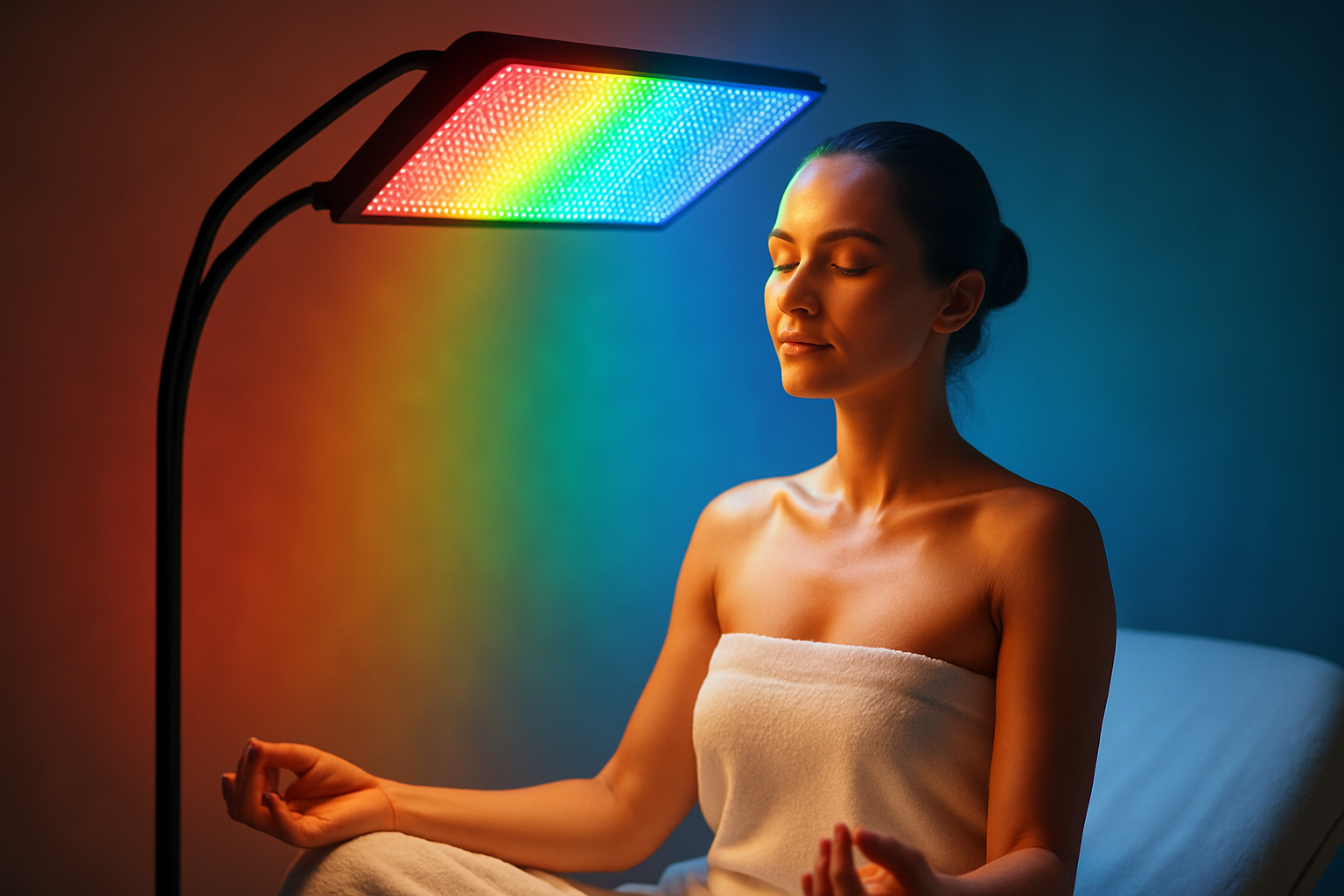Chromotherapy: Color's Hidden Impact on Wellness
In the ever-evolving landscape of beauty and fitness, a fascinating yet often overlooked practice is gaining traction: chromotherapy. This ancient healing technique, also known as color therapy, harnesses the power of different hues to promote physical and mental well-being. While the concept may seem unconventional at first glance, emerging research and growing interest from wellness enthusiasts are bringing chromotherapy into the spotlight. As we delve into this vibrant world, we'll explore how specific colors can influence our mood, energy levels, and even our physical health, potentially revolutionizing our approach to self-care and holistic wellness.

In the modern era, chromotherapy gained renewed interest in the late 19th and early 20th centuries. Pioneers like Edwin Babbitt and Dinshah Ghadiali developed sophisticated color healing systems, laying the groundwork for contemporary practices. Their work, although initially met with skepticism, paved the way for further research and integration of color therapy into various wellness modalities.
The Science Behind Color’s Influence
While skeptics may dismiss chromotherapy as pseudoscience, recent studies have begun to shed light on the physiological effects of color exposure. Research has shown that different wavelengths of light can stimulate the production of specific hormones and neurotransmitters in the body. For example, exposure to blue light has been found to suppress melatonin production, affecting sleep patterns, while red light may stimulate the production of collagen and elastin in the skin.
Moreover, the psychological impact of colors is well-documented in fields such as marketing and design. Colors can evoke emotional responses, alter perception, and even influence decision-making processes. This understanding has led to increased interest in harnessing color’s power for therapeutic purposes in both clinical and wellness settings.
Chromotherapy in Modern Wellness Practices
Today, chromotherapy is finding its way into various aspects of the beauty and fitness industry. Spas and wellness centers are incorporating color-based treatments into their offerings, from light therapy rooms to chromatherapy showers. These experiences claim to provide benefits ranging from stress reduction to improved skin health.
In the fitness realm, some innovative gyms are experimenting with color-changing LED lighting systems in their workout spaces. The idea is to use specific colors to enhance different types of exercises – for example, energizing red for high-intensity workouts or calming blue for yoga sessions. While research on the direct impact of these interventions on fitness outcomes is still limited, many users report improved mood and motivation during color-enhanced workouts.
Color-Infused Beauty Treatments
The beauty industry has also embraced chromotherapy, incorporating it into various skincare and cosmetic treatments. LED light therapy masks, for instance, have become increasingly popular for at-home skincare routines. These devices use different colored lights to target specific skin concerns:
-
Red light is believed to stimulate collagen production and reduce inflammation
-
Blue light is used to combat acne-causing bacteria
-
Green light is thought to help with hyperpigmentation and uneven skin tone
While the efficacy of these treatments varies, many users report positive results, and ongoing research continues to explore their potential benefits.
The Rainbow Diet: Nutrition Through Color
Chromotherapy’s influence extends beyond external applications, inspiring a nutritional approach known as the “rainbow diet.” This concept encourages consuming a wide variety of colorful fruits and vegetables, each offering unique health benefits associated with their pigments. For example:
-
Red foods like tomatoes and watermelon contain lycopene, an antioxidant linked to heart health and cancer prevention
-
Orange and yellow produce are rich in beta-carotene, supporting eye health and immune function
-
Blue and purple foods offer anthocyanins, which may improve memory and reduce inflammation
By focusing on incorporating a spectrum of colors into one’s diet, proponents argue that individuals can ensure a diverse intake of essential nutrients and phytochemicals, potentially enhancing overall health and well-being.
Integrating Chromotherapy into Daily Life
For those intrigued by the potential benefits of chromotherapy, there are numerous ways to incorporate color-based practices into everyday routines. Simple strategies include:
-
Curating a wardrobe with colors that align with desired moods or energy levels
-
Adjusting home lighting to create specific atmospheres for relaxation or productivity
-
Incorporating color visualization techniques into meditation or stress-reduction practices
-
Choosing workout gear or accessories in colors that motivate and energize
While the scientific community continues to investigate the full extent of chromotherapy’s effects, many individuals find value in these accessible, low-risk practices as part of a holistic approach to wellness.
As our understanding of the complex interplay between light, color, and human physiology deepens, chromotherapy stands at the intersection of ancient wisdom and modern science. While it may not be a panacea, the growing interest in color-based wellness practices reflects a broader trend towards holistic, personalized approaches to health and beauty. As research progresses and innovative applications emerge, chromotherapy may well become a vibrant addition to the palette of tools available for those seeking balance, vitality, and well-being in their lives.





